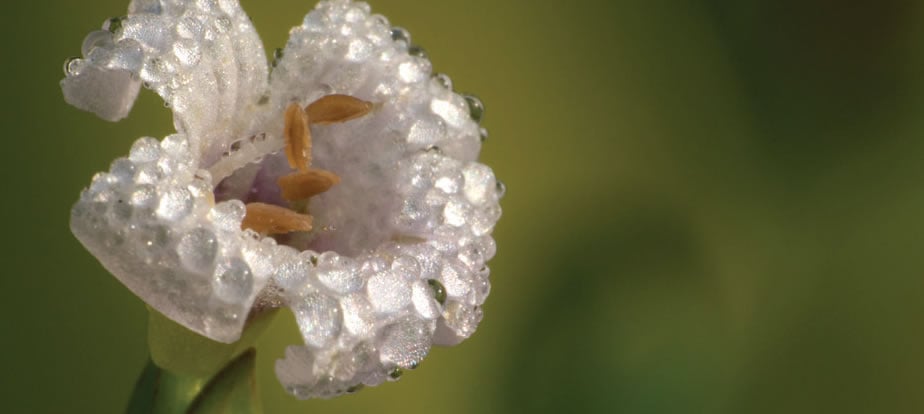Brahmi

The mind enhancing and nervous system soothing effects of this plant are legendary. Brahman is the Hindu name given to the universal consciousness and Brahma is the divinity responsible for all 'creative' forces in the world. Brahmi literally means the 'energy' or 'shakti' of Brahman. With brahmi deriving its name from these roots it has a lot to live up to; and it does. Brahmi is documented in ancient Indian texts as far back as the 6th century being widely used to promote intellect and treat diseases of the mind.
The Great Plant
Brahmi is a perennial creeping herb that grows in damp soils and marshes throughout the Indian subcontinent and parts of South East Asia. It has small succulent green leaves with beautiful white flowers. The photograph of the white flower glistening with drops of dew in the morning sun captures some of the plant's magic.
Brahmi Growers
Unlike the majority of herbs which need to be planted and harvested at specific times of the year, so long as it has sufficient irrigation and sunshine brahmi can be propagated, planted and harvested all year round. What this means is that, rather than employing lots of people for a short period to help with one enormous harvest, brahmi provides a regular job for a few highly trained people, who harvest and process relatively small quantities every few days throughout the year.
A Little Bit Of Chemistry
The primary constituents found in brahmi are bacopasides. Bacopasides have been associated with reducing the betaamyloid plaques linked to Alzheimer's. Brahmi is also packed with antioxidants. These antioxidants have been shown to impact directly upon the cells in the brain protecting them from oxidative damage and inflammation. This provides protection against degenerative conditions that target the brain and cognitive functioning.
Interesting Facts and Figures
There is often confusion between Centella asiatica and Bacopa monnieri as they are both known as brahmi, and they both share similar properties of improving mental performance. In some regions of India they differentiate between the two by calling B. monnieri 'jala-brahmi', which means 'water-brahmi', referring to its preference for growing in wet, boggy land and Centella asiatica as 'mandukaparni', meaning 'frog's foot' in reference to the webbed-like frog's foot shape of the leaf.

